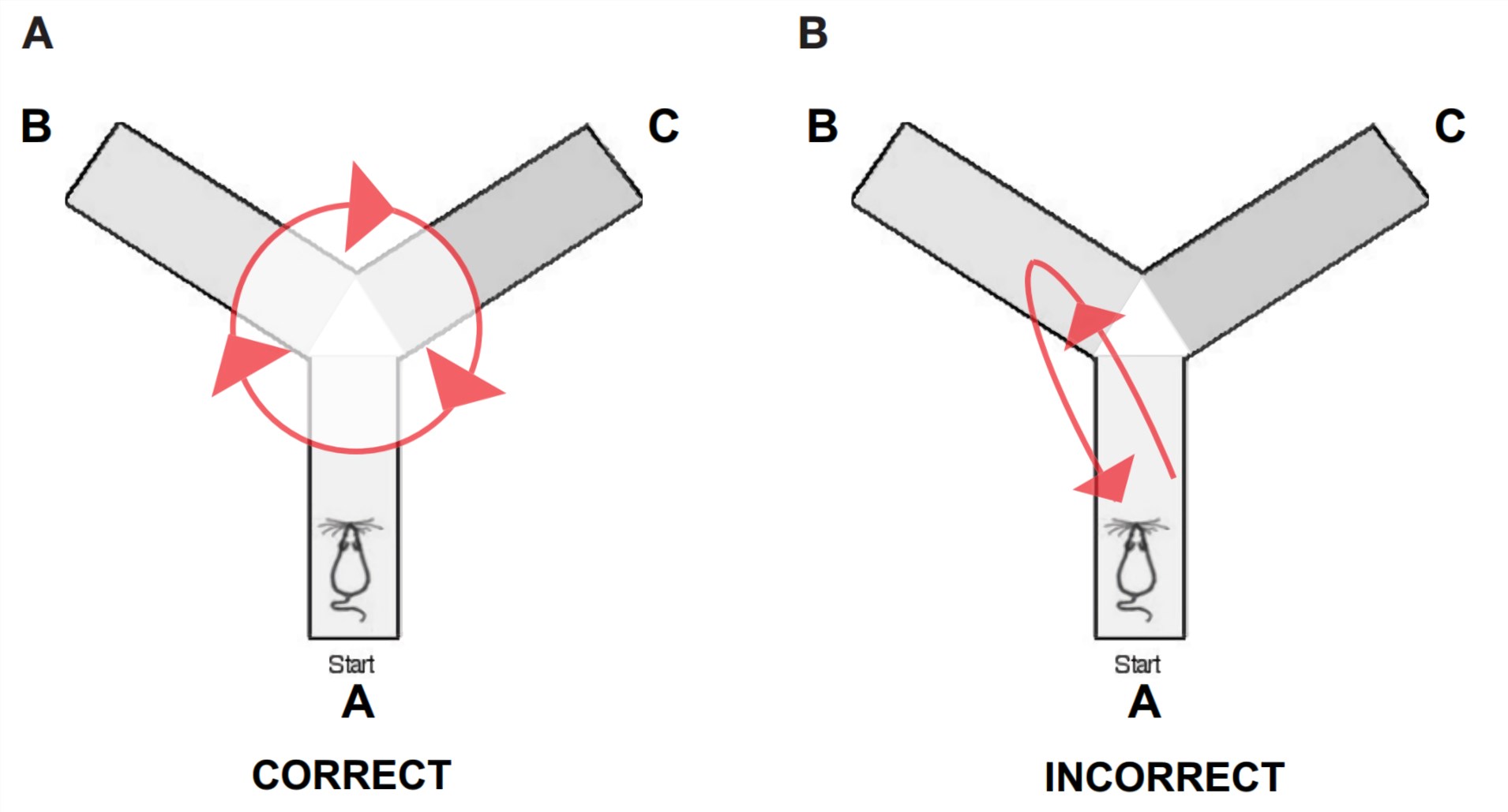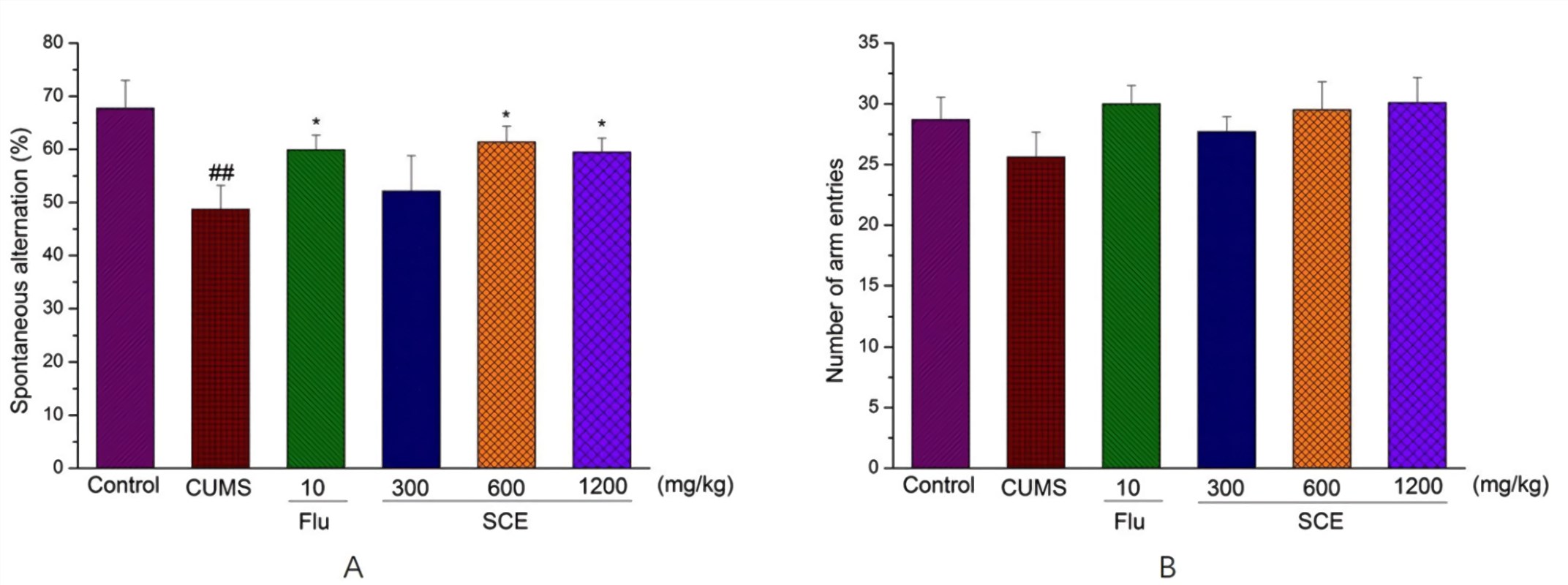Y Maze Test
The Y maze is widely used to assess behavioral task in preclinical research for studying spatial learning and memory. The use of Y maze tests includes spontaneous alternation test and recognition memory test. These tests have been shown to be sensitive to hippocampal damage, gene manipulations, and amnestic drugs. Creative Biolabs utilizes these Y maze paradigms to evaluate novel drugs for their effects on cognition or test the memory function in rodents.
Y Maze Spontaneous Alternation Test
Y Maze spontaneous alternation is a behavioral test based on the animals' natural curiosity for exploration. The animals typically tend to explore a new arm of the maze rather than returning to one that was previously visited. Many parts of the brain, including the hippocampus, septum, basal forebrain, and prefrontal cortex, are involved in this task.
 Fig.1 Schematic illustration showing examples of (A) a correct and (B) an incorrect alternation in the Y-maze test. (Momeni et al. 2015)1, 3
Fig.1 Schematic illustration showing examples of (A) a correct and (B) an incorrect alternation in the Y-maze test. (Momeni et al. 2015)1, 3
Testing occurs in a Y-shaped maze with three identical arms at a 120° angle from each other. After introduction to the center of the maze, the animal is given free access to all three arms. If the animal chooses a different arm than the one it arrived from, this choice is called an alteration. This is considered the correct response, whereas returning to the previous arm is considered an error. The total number of arm entries and the sequence of entries are recorded in order to calculate the percentage of alternation. This test is particularly useful in assessing hippocampal damage, quantifying the cognitive deficits in transgenic mice, and evaluating the effects of drugs on cognition.
Recognition Memory Test
Another use of the Y maze test is the recognition memory test to determine whether a rat or mouse prefers to spend time in a novel or known area. To test this, one arm of the Y-Maze is blocked off and the animal is allowed to explore the other two arms. The animal's memory function is tested when the animal is returned to the maze with all arms open and monitored for the tendency to spend time in the new arm or the known arms. This test is particularly useful as an initial test of memory function in mice.
 Fig.2 Effects of Schisandra chinensis extract (SCE) administration on Y-maze test, spontaneous alterations (A), number of arm entries (B). Chronic unpredictable mild stress (CUMS); Fluoxetine (Flu). (Yan et al. 2017)2, 3
Fig.2 Effects of Schisandra chinensis extract (SCE) administration on Y-maze test, spontaneous alterations (A), number of arm entries (B). Chronic unpredictable mild stress (CUMS); Fluoxetine (Flu). (Yan et al. 2017)2, 3
Creative Biolabs also conducts other behavioral tests for memory and cognitive function assessment in rodents:
- Morris Water Task
- Radial Arm Maze
- Passive Avoidance Test
- Fear Conditioning Test
- Novel Object Recognition Task
Creative Biolabs provides highly customized behavioral tests to suit specific scientific needs of our clients. Moreover, new behavioral tests of cognition are constantly developed and validated. In addition, these behavioral tests are widely used in combination with different neurological disease models to test the efficacy of drug candidates. Our comprehensive list of neurological disease models are summarized in the following chart:
For more information, please contact us or send us an inquiry.
References
- Momeni, S.; et al. Supplier-dependent differences in intermittent voluntary alcohol intake and response to naltrexone in Wistar rats[J]. Frontiers in Neuroscience. 2015, 9(424).
- Yan, T.; et al. Antidepressant-like effects and cognitive enhancement of Schisandra chinensis in chronic unpredictable mild stress mice and its related mechanism[J]. Scientific Reports. 2017, 7(1):6903.
- under Open Access license CC BY 4.0, without modification.
For Research Use Only.
